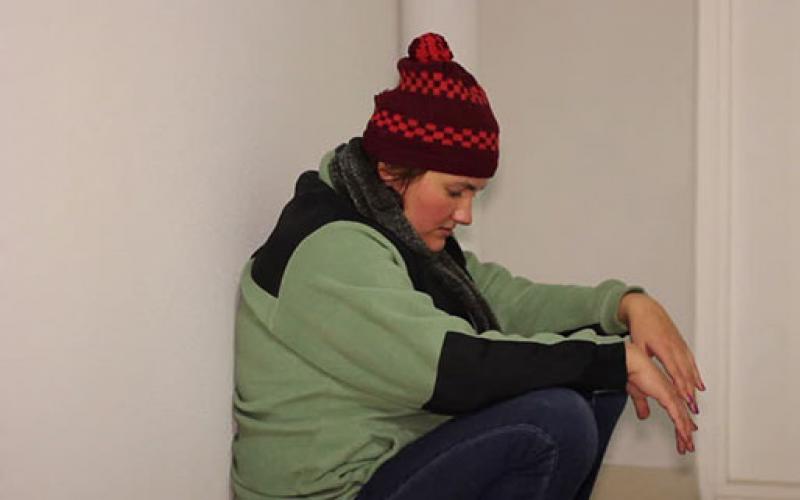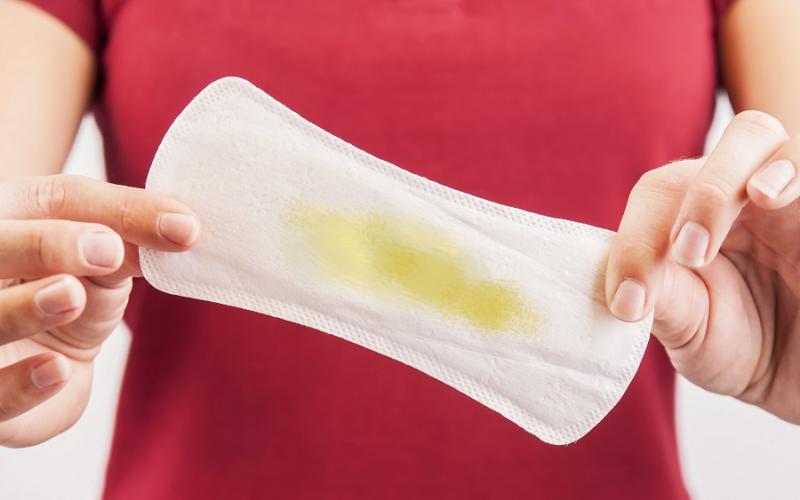White birch has long been considered a symbol of Russia. It is hardly possible to imagine Russian fields, forests and groves without these trees. Her beauty was sung by poets, writers and artists at all times. Exactly as long as the birch lives for years, this tree accompanied the Russian people. She was worshiped, loved and feared. Some Slavic tribes believed that the souls of the dead lived in birches, so settlements were created away from these trees. Many, on the contrary, believed that the birch scares away evil forces and brings happiness.
In summer, in the shade of its spreading branches, one could hide from the sun and relax; in winter, a hut was heated with firewood from this tree. It is impossible to imagine a Russian bath without a birch broom, and its juice has always been valued for its miraculous properties of restoring strength and cleansing the blood.
Decorative advantages of birch wood are actively used in furniture production. The hardness and uniformity of the fine-grained surface, the ease of processing, the soft, golden luster and incomparable hue of this wood have won favor with furniture makers. Mature trees are especially valued.
In no other country in the world has birch been as popular as in our country. And in no country in the world there are so many. The cold climate does not harm this unpretentious tree. It can grow in swampy lowlands, and on rocky hills, and along river banks. Likes open, sunny spaces, but can also tolerate shaded areas. In recent years, birch has been actively planted in city parks and alleys, however, in unnatural conditions for itself, a tree is unlikely to live up to seventy years. 
Nevertheless, the question "how many years does a birch live" can be safely answered that it depends on its type and climatic conditions of growth.
To date, scientists have about a hundred species of these trees: from dwarf or shrubby, growing in the regions of the far north in permafrost and reaching a maximum height of no more than one meter, to the more familiar drooping birch, whose height reaches thirty meters.
How many years a birch lives, you can determine if you look closely at it. If a tree grew naturally, in the wild conditions familiar to it and was not subjected to human cultivation, then its chance to live up to one and a half hundred years increases significantly. In the territories of the Far East bordering China, the Schmitt birch grows, which can reach an age of four hundred years.
Birch has long been considered the most beloved tree of poets, artists and ordinary people. Poems were composed about her, songs were sung, she was painted in pictures, used in medicine. This beautiful tree with interesting coloring, tasty juice and medicinal pollen. Throughout her life, a person uses medicinal branches, leaves, buds, bark. It seems to people that birch lives forever.
Birch. Types and life expectancy
There are about 120 species of birch, 64 species are found in the forests of Russia. The average life expectancy of a birch is about a hundred years and depends on the living conditions. Basically, this unpretentious tree, which can live well in any soil. The main thing is to be wet, as birch loves water and consumes up to 250 liters per day.
In Russian forests, birches live no more than 120 years, with the exception of iron birch, whose life expectancy is almost 400 years.
Even 100 years ago birch was more rare tree, than now. It grew mainly along river banks and in forests in place of fallen coniferous trees. So she grew up in different places of the taiga. For more than 150 years, the birch did not linger in one place.
Birch also has permanent habitats. On the border of the forest near the Arctic Circle grows winding birch, in the Pamirs - Pamir birch with pink bark, in the Caucasus - Radde birch, also with pink bark, in Transbaikalia - black birch with shaggy bark.
On the Far East stone birch grows. Its age is 3-4 times more than white birch and is 500 years old. Its trunk is more like an apple tree, the only difference is in the bark. The color of the bark does not look like either a birch or an apple tree. This is a pink-gray bark that lags behind the tree itself and hangs down in long strips.
Warty birch or drooping birch is widespread. It grows quite quickly, starting at the age of 10, it grows by 75-90 cm per year and lives 50-60 years.
Application in medicine
IN folk medicine use everything that birch can give. It is an excellent immunostimulating, cleansing and vitamin remedy. Bath brooms are made from branches and leaves, which, under the influence of hot air in the bath, release essential healing oils that have a beneficial effect on the condition of the skin and the whole human body.
With many diseases, birch buds help well, because they contain essential oils, tannins, resins, grape sugar, flavonoids and vitamin C. It is a good antiseptic and expectorant, which is used to treat diseases of the respiratory system. In addition, they are used in the form of lotions or dressings for various soft tissue wounds.

Birch leaves have a bactericidal effect, help to cope with headaches, rheumatism, disorders nervous system. Decoctions and infusions are used in the upper respiratory tract, arthritis, gynecology and dermatovenereology.
These are far from all the diseases that birch treats.
Grow your own birch
Any gardener dreams of having a long-lived birch in his area. Growing it is easy. you can buy ready-made ones, it is desirable that they be with an earthen clod on the roots.
They dig a deep enough hole, add a mixture of garden soil, humus, sand and peat.
If planting occurs in the spring, you can add complex fertilizer, in the fall - phosphorus-potassium in the amount of 200 grams. The distance between seedlings should be at least 4 meters, since root system birch is actively developing and requires a lot of space.

You can grow birch from seeds that are sown in shallow pits and covered with a layer of humus. Before planting, they must be kept in the cold for a month, then dried at room temperature. Seeds are sown at the beginning of winter in already frozen soil or in early spring, immediately after the snow melts.
This is a healing tree, it is important to pay attention to the fight against weeds that can interfere with the development of the plant. Weed the soil regularly, but no deeper than 3 cm, so as not to damage the roots. In order to prevent fungi and various pests, the crown of the tree must be sprayed every year with fungicides and insecticidal preparations.
Having grown a birch on your site, you will be able to use it throughout your life. healing properties. It will become an indispensable assistant in the fight against many diseases. Due to its impressive life span, birch will be useful for more than one generation.
Poplar is a fast growing tree for the first 40 years. After this period, the growth of the plant slows down, the tree begins to age. The maximum possible life expectancy of a poplar is 120-150 years, but rarely any specimen survives the period allotted by the species without problems. On average, poplar trees grow 60-80 years.
The willow family, which includes all varieties of poplars, prefers well-drained moist soils, does not tolerate waterlogging. Due to the special structure of the root system, it prefers places with a high groundwater flow.
An adult tree grows up to 50 m in height and up to 1 meter in trunk girth. The crown of the plant is egg-shaped, well amenable to pruning and shaping. The color of the bark of the trunk is gray, with a cracking surface. There are no cracks on the bark of the branches.
It is often important to cut down the poplar in time or cut it. And that's why.
Weaknesses of the tree
fibrous root system
For a huge powerful tree, the poplar rhizome is relatively weak. It spreads over the surface of the earth far beyond the projection of the crown, which entails the destruction of closely standing walls or other structures. Within the city, there are frequent cases of wind-blown perennial poplars causing damage to transport, buildings, and residents.
Softwood
The rapid growth of poplars entails the formation of loose, light wood, subject to mechanical stress. Often strong branches and even tree trunks break, forcing city services or the people themselves to repair the consequences of unforeseen damage to the crown.
Inability to resist diseases
The short lifespan of a tree becomes even shorter due to the susceptibility of the genus to lesions of various types of diseases. The main ones are: cytosporic necrosis, pretychic necrosis and wet ulcerative vascular cancer. Weakened trees, adult specimens or young trees, lose their decorative crown and die immediately or after a few years.
Where poplar wood is used
The ease of processing poplar trunks has led to the widespread use of wood in construction, furniture, paper, plywood and many other industries. The strength and density of lumber made it possible to make railway sleepers from poplar wood, to manufacture charcoal. Poplar firewood is of poor quality, as it emits a small amount of heat during combustion.
(Document)
n1.doc
Section IV. DECORATIVE QUALITIES OF TREES, SHRUBS AND PERENNIUMSCHAPTER I. DURABILITY OF TREES AND SHRUBS
Tree species have a long life cycle. The age of individual specimens of mammoth trees, eucalyptus, baobabs, dammar, taxodia reaches several thousand years.
The majestic size and durability are characteristic not only of tropical and subtropical trees. In our country, huge yews grow, which have reached the age of 1000-1500 years, junipers - 2000, Caucasian fir - 800-900, cedar pine - 1000, common spruce - 500 years. Of the hardwood species, oaks-600-1000, walnut-200-300, plane trees-800-1000, chestnut-800-900, linden-800, elm-500-600 years are famous for the largest size and durability (Fig. 56, 57).
Rice. 56. Ancient specimen of oak.
Rice. 57. Old linden in the park of Nesvizh.
Significant durability is possessed not only by large trees, but also by relatively low shrubs. So, some rosehip bushes live up to 400 years, common hazel - up to 100-150. There is a registered copy common lilac who has reached the age of 150. Laxative buckthorn and black elderberry live up to 100 years. Evergreen and deciduous, squat and dwarf shrubs have a relatively high durability. B.M. Kozo-Polyansky reports that Julia's wolf ( Daphne Julia TO. Paul .) reaches 200 years of age. A.V. Kozhevnikov writes that blueberries, lingonberries and blueberries live up to 300 years.
Curly shrubs or creepers are also durable. Decondol Sr. notes that in 1804 near Montpellier (France) he found ivy, the trunk of which at the root collar had a girth of 170 cm. Investigating the growth of this bush for 45 years, Decondol came to the conclusion that the age of this plant is 485 years. Climbing roses and vines reach a hundred years of age .
The life span inherent in individual specimens largely determines the service life of tree species and is essential when selecting them for certain green devices.
Lifespan and sizes of trees in green devices
The life expectancy of trees that are part of tree groups and arrays in green devices must be strictly coordinated among themselves. .
So, some woody plants live 20-30 years, others - 50-80 200-300 years or more (oak and elm). If, when creating tree arrays and groups, the durability of trees is not taken into account, this will lead to the fact that when the less durable ones die, the overall structure and composition of the plantation will collapse.
If we do not take into account the size to which a tree can grow over the long years of its life, this will lead to the fact that tree groups and individual trees will be placed extremely closely, the crowns will cover the glades, and the park will turn into a forest thicket (Table 22).
Tab. 22. Lifespan and size of trees.
| Name of trees | Life span in years | Dimensions in m |
||||
| medium | maximum |
|||||
| average | maximum | height | crown diameter | height | crown diameter |
|
| Conifers |
||||||
| White spruce | 200 | 400 | 20 | 6 | 30 | 10 |
| » eastern | 300 | 500 | 40 | 10 | 60 | 10 |
| » prickly | 100 | 200 | 20 | 4 | 25 | 6 |
| » common | 200 | 500 | 30 | 10 | 50 | 15 |
| European larch | 300 | 60 | 30 | 7 | 50 | 10 |
| » Siberian | 300 | 600 | 30 | 7 | 50 | 10 |
| Liesuga | 200 | 500 | 40 | 10 | 90 | 15 |
| Common juniper | 200 | 1500 | 5 | 3 | 9 | 4 |
| European fir | 200 | 400 | 20 | 8 | 45 | 15 |
| » caucasian | 300 | 800 | 40 | 10 | 60 | 15 |
| » single color | 200 | 350 | 25 | 6 | 60 | 10 |
| » Siberian | 100 | 200 | 20 | 5 | 30 | 7 |
| Siberian cedar pine | 300 | 1000 | 20 | 8 | 30 | 15 |
| » common | 200 | 500 | 25 | 8 | 50 | 15 |
| Thuja giant | 300 | 80o | 30 | 8 | 60 | 15 |
| » western | 100 | 200 | 15 | 6 | 20 | 8 |
| Deciduous |
||||||
| White acacia | 80 | 150 | 20 | 8 | 30 | 12 |
| Amur velvet | 150 | 300 | 20 | 8 | 28 | 12 |
| Warty birch | 150 | 250 | 20 | 8 | 25 | 10 |
| Berek | 100 | 200 | 15-20 | 8 | 25 | 12 |
| Beech oriental | 150 | 300 | 30 | 15 | 50 | 20 |
| » western | 150 | 300 | 30 | 15 | 50 | 20 |
| Bunduk | 150 | 200 | 20 | 10 | 25 | 15 |
| Elm | 200 | 400 | 25 | 10 | 25 | 15 |
| Gledichia | 100 | 200 | 20 | 10 | 25 | 15 |
| Hornbeam | 120 | 250 | 20 | 10 | 25 | 15 |
| forest pear | 80 | 150 | 15 | 8 | 25 | 12 |
| summer oak | 300 | 1000 | 25 | 15 | 40 | 30 |
| white willow | 60 | 120 | 20 | 10 | 25 | 15 |
| » weeping | 80 | 150 | 15 | 10 | 20 | 15 |
| Elm | 200 | 600 | 25 | 10 | 40 | 15 |
| horse chestnut | 100 | 200 | 20 | 10 | 35 | 15 |
| Norway maple | 100 | 200 | 20 | 10 | 35 | 15 |
| » field | 100 | 200 | 12 | 6 | 65 | 8 |
| » silver | 100 | 300 | 20 | 10 | 30 | 15 |
| » ash-tree | 60 | 100 | 15 | 8 | 20 | 10 |
| » sycamore | 100 | 250 | 20 | 10 | 40 | 15 |
| Large-leaved linden | 200 | 700 | 25 | 10 | 40 | 15 |
| » small-leaved | 200 | 800 | 20 | 12 | 30 | 15 |
| » silver | 200 | 400 | 20 | 12 | 25 | 15 |
| Black alder | 100 | 300 | 20 | 8 | 25 | 10 |
| Manchurian walnut | 150 | 200 | 20 | 10 | 28 | 15 |
| » walnut | 100 | 300 | 15 | 12 | 20 | 18 |
| Sycamore | 200 | 1000 | 25 | 20 | 30 | 25 |
| Mountain ash | 60 | 100 | 10 | 5 | 18 | 6- |
| Poplar white | 100 | 300 | 25 | 15 | 30 | 20 |
| » Canadian | 100 | 200 | 25 | 15 | 40 | 20 |
| » pyramidal | 40 | 80 | 15 | 4 | 25 | 5 |
| white mulberry | 100 | 200 | 10 | 5 | 20 | 8 |
| forest apple tree | 100 | 200 | 10 | 7 | 15 | 10 |
| common ash | 150 | 250 | 25 | 10 | 30 | 12 |
According to the life span, trees can be divided into three groups: low, medium and long life. Trees of low longevity begin to grow decrepit in the second half of the first century. This includes many poplars, birches, bird cherry, apple trees, mountain ash. Trees of medium longevity begin to grow decrepit from the second century. These include most of our forest-forming species, such as spruce, fir, maple. Trees of great longevity begin to grow decrepit only from the third century. These are oak, ash, walnut, elm, larch.
The decorative appearance of woody plants largely depends on age-related changes. At a young age, the oak has minor decorative qualities, on average it is still not very expressive, and only in old age does it acquire a powerful and majestic appearance. Spruce, on the contrary, is very decorative in youth, and often becomes ugly in old age.
From a decorative point of view, the entire life cycle of trees for practical purposes can be conveniently divided into four main periods:
The period of education - from the germination of the seed to the achievement of sizes suitable for planting in the usual; green building conditions, this plant period) usually takes place in nurseries;
The period of formation begins from the moment of planting in a green device and continues until the plant acquires the appearance of the most typical for this species. During the period of formation, most tree species have little artistic expressiveness, their sizes are not large, the trunk is thin, the crown is rare, slightly leafy;
The period of full development begins from the moment the full form is reached and lasts until the onset of aging;
The senile period is when the trees begin to grow decrepit. During this period, some of them acquire especially majestic forms, while others, on the contrary, become ugly.
Most trees of fast-growing species with little longevity are ugly in old age. These are poplar, bird cherry, mountain ash. Trees with great longevity are mostly the most decorative in old age, and sometimes so original that they are left in the park even after they have dried up (especially since they can serve as a nesting place for useful birds for a long time): These are oak, linden, ash, cedar, larch.
Tree species at different stages of their development have different requirements for soil fertility. Especially a large number of A tree needs nutrients during its period of intensive growth, at the age of 10-40 years, when the bulk of branches and leaves are formed. Lack of nutrients during this period causes stunting, the appearance of dry tops and the death of the tree.
Every year, autumn and spring cleaning is carried out in gardens and parks, leaves, small fallen branches are collected. Each ton of such "garbage" contains 23 kg nitrogen, 4 kg phosphorus and 10 kg potassium. The removal of these substances from park plantings is essentially the plundering of soil fertility. Half-decayed leaves, grass, and branches, valuable for restoring fertility, should be composted and re-introduced into the soil in a rotted state together with mineral fertilizers.
In many parks, the premature death of trees causes soil compaction. Tree species with a superficial root system are especially affected by soil compaction and trampling:
Spruce, birch, ash.
The establishment of a strict regime in the park, the regulation of the number of visitors, the strict prohibition of movement outside the road and footpath network can significantly improve the condition of the plantations and prevent their premature death.
Shrub undergrowth plays an important role in protecting the root system of tree species from trampling. Dense undergrowth in tree plantations mechanically protects tree roots from trampling and creates favorable conditions for their development. At the same time, dense thickets and groups of shrubs serve as the best place for nesting birds.
The durability of tree plantations largely depends on their species composition and structure. Durable and sustainable plantations can only be those in which the combination of species within the plantation will contribute to their growth, development and reduce competition with other plant species.
Life expectancy and size of shrubs in green devices
The durability of shrubs increases significantly due to their property to maintain the ability to grow overgrown to a very old age. In decrepit bushes, strong pruning (planting on a stump) can again cause powerful young shoots, which in the future will differ little in flowering and fruiting from young seed or vegetatively propagated bushes. Thirty - thirty-five-year-old lilac and jasmine bushes after such rejuvenation again bloom magnificently for the same number of years. Thanks to this property, the service life of shrubs in gardens and parks can be significantly extended.
Many shrubs have the ability to produce abundant root offspring (sorbaria, fragrant raspberries, some meadowsweet) or, by rooting low-lying side branches, give layering (Cossack juniper, Chinese juniper, forsythia), due to which they grow all the time over the area and constantly self-renew. In practice, the life of such shrubs can stop only because of the final depletion of the soil. Centuries-old thickets of lilac, meadowsweet, raspberry, sorbaria can be observed near the places of former settlements, ancient, abandoned estates. In the Trostyanets arboretum in Ukraine, some thickets of yellowberry and meadowsweet are over 100 years old.
Although shrubs are inferior in terms of service life tree species, however, with appropriate care and agricultural technology, they can form stable ornamental plantations for a long period, sometimes up to 100 years or more (Table 23).
Tab. 23. Life expectancy and size of shrubs.
| Name of shrubs | Maximum life span in years | Limit dimensions in m |
|
| height | crown diameter |
||
| Quince ordinary | 80-100 | 5 | 3 |
| » japanese | 60-80 | 1,5 | 1,5 |
| Acacia yellow | 150 | 5 | 4 |
| Amorpha shrub | 60 | 3 | 2 |
| Privet | 60 | 3 | 2 |
| Barberry common | 50 | 2 | 1,5 |
| » Thunberg | 50 | 1,5 | 1 |
| Bobovnik golden rain | 70 | 6 | 3 |
| Euonymus european | 70 | 4 | 3 |
| prickly hawthorn | 300 | 7 | 3 |
| black elderberry | 60 | 7 | 3 |
| Weigelia | 55 | 2 | 2 |
| Cherry Magolebskaya | 150 | 8 | 3 |
| Wolf's bast | 200 | 1,5 | 1 |
| Vyazovik-pteleya | 80 | 5 | 2,5 |
| Hydrangea paniculata | 60 | 3 | 2 |
| Torodovin | 60-80 | 3 | 2 |
| Deutzia crenate | 50-60 | 3 | 2 |
| Honeysuckle Tatar | 60-80 | 4 | 3 |
| » honeysuckle | 50-70 | 8 | - |
| Jasmine - mock orange | 70 | 6 | 3 |
| Viburnum ordinary | 50-70 | 5 | 3 |
| Cornel | 300 | 6 | 3 |
| Cotoneaster multicolor | 60 | 2 | 1,5 |
| Klekachka Colchis | 50 | 3 | 2 |
| leather jacket | 80 | 3 | 3 |
| Buckthorn laxative | 80 | 4 | 3 |
| Hazel | 150 | 4 | 3 |
| Goof narrow-leaved | 60-80 | 8 | 8 |
| Matonia holly | 60 | 1 | 0,5 |
| Sea buckthorn | 80 | 6 | 3 |
| Broom | 50 | 2 | 1,5 |
| Rozovik | 60 | 2 | 1,5 |
| Roses (cultivars) | 50 | 2 | 1,5 |
| » (curly) | 100 | 15 | - |
| " (rose hip). | 400 | 3 | 2 |
| Amur lilac | 100 | 8 | 4 |
| » hungarian | 80 | 5 | 3 |
| » common | 100 | 4 | 3 |
| Skumpia | 80 | 3 | 2 |
| Snowberry | 50 | 2 | 1,65 |
| Forsythia | 60 | 3 | 3 |
| Chemysh | 50 | 3 | 2 |
In longevity ornamental shrubs is their huge advantage over herbaceous ornamental plants.
CHAPTER II. FLOWERING OF TREES AND SHRUBS
In order to reach one or another phase of development, including the phase of flowering, a plant needs a certain, depending on the ecotype (form, variety), a set of environmental conditions, primarily heat. This dependence is the reason that in the territory of the European part USSR the terms of flowering of plants, as a rule, move in the direction of increasing heat (the so-called "positive temperatures"). In early spring, the flowering periods have a direction from southwest to northeast, however, already in May they take a direction close to meridional - from south to north. In June-July, very often the isoants with their eastern ends are slightly bent to the north, i.e. the movement of the timing of flowering takes at this time the direction from the southeast to the northwest.
Numerous studies have shown that in the flat conditions of the European part of the USSR, the beginning of flowering of many plants is delayed by 2 days as you move north for each degree of latitude, i.e., approximately 110 km. In other words, "spring comes" from south to north at a speed of about 50 km per day.
The terrain should also be taken into account, namely: for every 100 m lifting the development of plants, as well as flowering is delayed by 2-3 days. With the help of these holdings, it is possible to determine the approximate phase of flowering of one or another plant resistant under given conditions for almost any point, if the date of its flowering in some other, if possible, nearest point is known. It is only necessary to take into account the distance between these points and the difference in height.
The calendars in this chapter give the dates of flowering for three places: the Forest-Steppe Experimental Station of Ornamental Horticulture, the Trostyanetsky Dendrological Park, and the Central Republican Botanical Garden of the Academy of Sciences of the Ukrainian SSR (CRBS) in Kyiv.
In the tables of flowering dates for trees and shrubs (Tables 24 and 25), Russian and Latin names breeds, a brief description of their growth in the conditions of their homeland and distribution (homeland and, usually, in the culture of the middle zone of the European part of the USSR), as well as the decorative features of flowers-inflorescences.
The forest-steppe experimental station is located in the Lipetsk region, approximately at 7°37" east longitude (from Pulkovo) and 52°58" north latitude. Elevation above sea level of the station area is about 174-237 m.
Trostyanetsky dendrological park is located in the south-eastern part of the Chernihiv region, approximately at a latitude of 50°48 "(East longitude from Greenwich about 32°41"). Height above sea level about 150-200 m.
The data of the Forest-Steppe Station are the average data of a ten-year period. The average data of the arboretum is calculated for 4-6 years. Central Republican Botanical Garden - for 2-10 or more years, depending on the breed.
The discrepancies that are sometimes found between the actual data on the average flowering times of all these three points are mainly explained by over the years observations, and perhaps in some cases, inaccuracy in observations and non-identity of plants. In such cases, the data of the Forest-Steppe Station should be taken as the initial ones.








